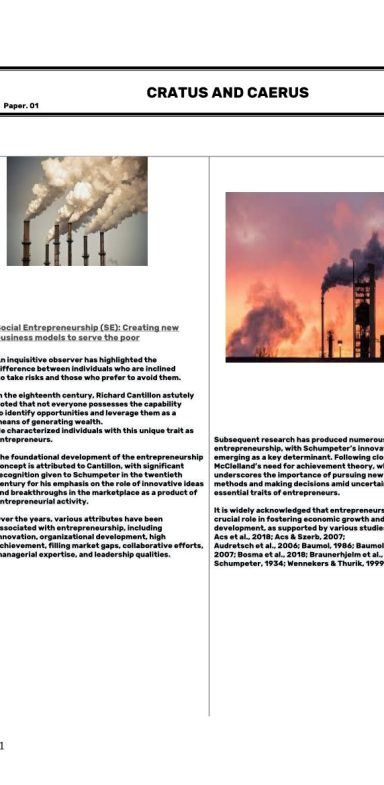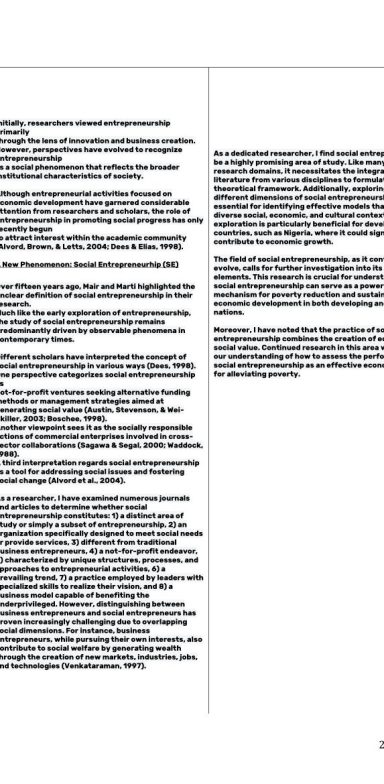FUTURE PROJECT: Research Proposal on Leadership
Transformational Leadership and Innovative Work Behaviour: The mediating role of psychological empowerment
Introduction
The knowledge of the beginning of human life on earth is undeniably beneficial. I imagine an atmosphere with forest dominating some part of the space and water covering the earth.
The world today is unarguably an evidence of a very powerful mind, with reasoning as its major tool for growth. For any conformation to happen, there is a need to influence the thoughts of human mind in order to accept orderliness as a surviving tool.
Charles Darwin’s theory of evolution indicates that resources are limited; as a result there is natural competition among habitants of an environment, or a nation for available resources. In a population where famine has exhausted the available food for example, the less suited individual is prone to carnivorous attack in an extreme famine situation.
In order for all the habitants of an environment to survive and grow peacefully, logic depicts that the more suited individuals that would naturally survive better in an environment show a level of care to less suited individuals, by encouraging and influencing them with their unique positive traits and behaviours, putting the more suited individuals in leadership positions and the less suited individuals in followership position.
The person in a leadership position also has to survive regardless of the circumstance. The leader experience challenges in surviving that helps her grow. The effects of some dark challenges, depending on the style of leadership may directly or indirectly influence her followers as well as herself.
Human natural instinct would be to survive at the first consciousness of their environment. For example, what to do with the waters, plants and everything else, is the immediate reality in a natural atmosphere. The idea of drinking water and eating vegetables was from a creative mind born from the art of surviving.
Creativity is the foundation of a functional world along side leadership. The significance of leadership cannot be over emphasized. Burns (1978) within his bandwidth pointed leadership as one of the most observed subject on earth.
Martins and Terblanche, 2003; Amabile et al., 1996; Perry-Smith and Mannucci, 2017; West, 2002) have recognized creativity as a precondition for innovation. Where creativity is the creation of valuable and new thoughts (Amabile et al., 1996; Amabile, 1998). Several studies have reported the roles of various styles of leadership in achieving greater innovation performance (e.g. Hoch, 2013; Jiang and Chen, 2018; Zacher and Rosing, 2015). The stream of research on the relationship between various leadership styles, creativity and innovation is still underdeveloped.
Overall, transformational leadership style provides an atmosphere for creativity, and ultimately innovation by the entire cycle. Burns saw transformational leadership as occurring when a leader and her followers share common key values and goals, as well as motivate each other to bring out the best qualities in them to achieve a common goal (Bass, 1990b). Chemers in her literature noted that a true transformational leadership has occurred when followers of a leader have adopted institutional objectives as part of their own personal goal, and are motivated to fulfilling this goal by achieving collective purposes (Chemers, 1997, p. 158).
The aim of this research is to explore the impact of different styles of leadership on employee innovative behaviour. The study would further Investigate the relationship between creativity, innovation and organizational productivity.
Contributions:
Understanding how transformational leadership encourages firm innovations.
To establish the psychological effect of transformational leadership on leaders and their subordinates.
Research questions:
- What is the impact of charismatic leadership on follower's creativity and innovation?
- What are the mechanisms through which transformational leadership influences creativity, innovations and organization well-being?
- What is the mediating role of psychological empowerment between transformational leadership and employee innovations?
Design/methodology/approach
- Consider a market–oriented criterion to measure organizational innovation; Data would be collected from information technology firms in America, Asia and Europe.
- Multilevel modeling (MLA) and hierarchical regression analyses would be used to explore direct and indirect effects of transformational leadership on creativity and innovation, respectively.
- Ethnographic research would be used to observe and interact with leaders of a nation or professionals in leadership positions in their work environment. To understand the mediating role of psychological empowerment and the nature of the relationship between leaders and it’s subordinate. This would be done twice a week and would run for three months in each of the selected continent.
Project Timeline
YEAR 1
Months 1 - 6
- Refining research proposal
- Apply for ethical approval
- Begin observation at selected media companies/Developing field notes
- Exploring existing literature and theory
YEAR 1
Months 6- 12
- Writing up literature review
- Continue with observation
- Preparing interview questions and drawing up interview schedules
YEAR 2
Months 12 - 18
- Interviews and transcription
- Continue with observation
- Continue drawing up interview schedules
YEAR 2
Months 18 - 24
- Revisit literature review
- Data analysis
YEAR 3
Months 24 - 30
- Data analysis
- Writing up findings
YEAR 3
Months 30 - 36
- Writing up
- Suggestions for further research
- Finish thesis
Biblography
Amabile, T. M. (1988). A model of creativity and innovation in organizations. Research in Organizational Behavior, 10(1),123–167.
Amabile, T. M. (1996). Creativity in context: Update to ‘the social psychology of creativity’. Boulder, CO: Westview Press.
Amabile, T.M., Conti, R., Coon, H., Lazenby, J. and Herron, M. (1996), “Assessing the work environment for creativity”, Academy of Management Journal, Vol. 39 No. 5, pp. 1154-1184.
Amabile, T.M. (1998), How to Kill Creativity, Harvard Business School Publishing, Boston, MA.
Amabile, T. M. (2012). Componential theory of creativity. Boston, MA: Harvard Business School.
Bass, B. (1990b) “From Transactional to Transformational Leadership: learning to share the vision”. Organizational Dynamics, Vol. 18, No. 3, pp.19-31.
Bass, B. M., & Avolio, B. J. (1993). Transformational leadership: A response to critiques. In M. M. Chemers & R.
Ayman (Eds.), Leadership theory and research: Perspectives and directions (pp. 49-80). San Diego, CA: Academic
Press.
Burns, J. M. (1978) “Leadership”, NY: Harper & Row.
Chemers, M. (1997). An integrative theory of leadership. Mahwah, NJ: Lawrence Erlbaum Associates.
Hoch, J.E. (2013), “Shared leadership and innovation: the role of vertical leadership and employee integrity”, Journal of Business and Psychology, Vol. 28 No. 2, pp. 159-174.
Jiang, Y. and Chen, C.C. (2018), “Integrating knowledge activities for team innovation: effects of transformational leadership”, Journal of Management, Vol. 44 No. 5, pp. 1819-1847.
Martins, E.C. and Terblanche, F. (2003), “Building organisational culture that stimulates creativity and innovation”, European Journal of Innovation Management, Vol. 6 No. 1, pp. 64-74.
Perry-Smith, J.E. and Mannucci, P.V. (2017), “From creativity to innovation: the social network drivers of the four phases of the idea journey”, Academy of Management Review, Vol. 42 No. 1,pp. 53-79.
West, M.A. (2002), “Sparkling fountains or stagnant ponds: an integrative model of creativity and innovation implementation in work groups”, Applied Psychology, Vol. 51 No. 3, pp. 355-387.
Zacher, H. and Rosing, K. (2015), “Ambidextrous leadership and team innovation”, Leadership & Organization Development Journal, Vol. 36 No. 1, pp. 54-68.
Open to partnership
UK Research and Innovation
National Research Council of Canada
CCIL has client relations team members in England, United Kingdom and Ontario, Canada.
©Copyright. Cratus and Caerus |Asset Management|. All rights reserved.
We need your consent to load the translations
We use a third-party service to translate the website content that may collect data about your activity. Please review the details in the privacy policy and accept the service to view the translations.


